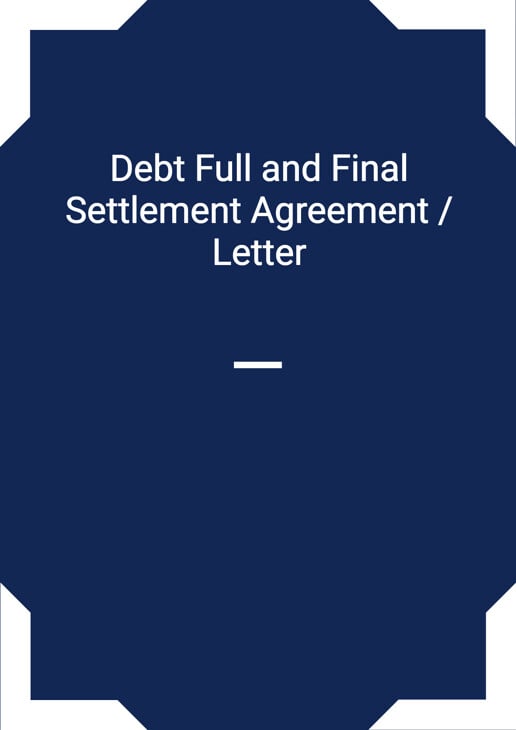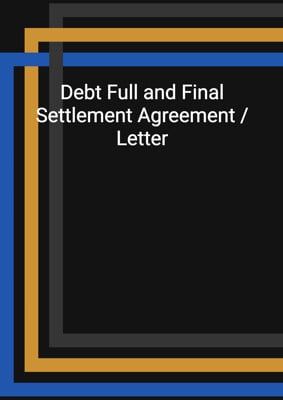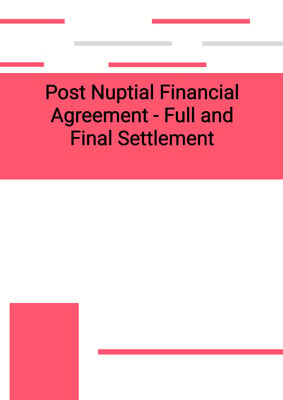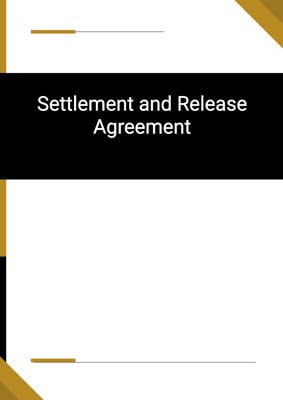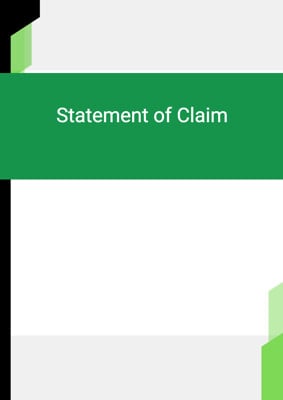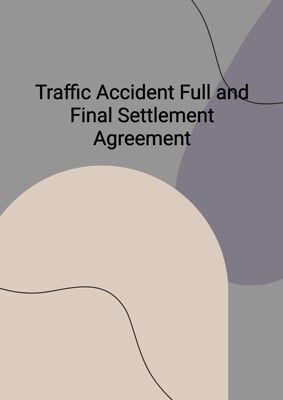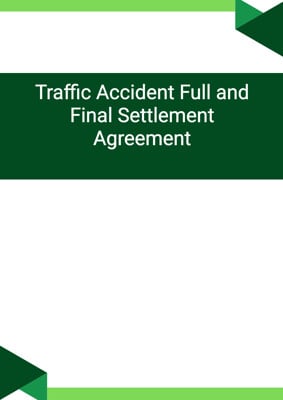How to Tailor the Document for Your Need?
01
Create Document
Click "Create Document" button and the document will be prepared with your account details automatically filled in.
02
Fill Information
Please fill in any additional information by following the step-by-step guide on the left hand side of the preview document and click the "Next" button.
03
Get Document
When you are done, click the "Get Document" button and you can download the document in Word or PDF format.
04
Review Document
Please review the document carefully and make any final modifications to ensure that the details are correct before sending to the addressee.
Document Preview
Document Description
The Debt Full and Final Settlement Agreement / Letter is a document that is used to settle an outstanding debt between a debtor and a creditor. This document is of utmost importance as it serves as a legally binding agreement between the two parties, ensuring that the debt is settled in a fair and mutually agreed-upon manner.
The entire document consists of two main sections: the debtor's letter and the creditor's confirmation. The debtor's letter begins with the account holder's information, including their first name, last name, and address. It is important to provide accurate and up-to-date information to ensure proper identification. The letter is addressed to the creditor, expressing the debtor's intention to settle the outstanding debt.
In the debtor's letter, the reasons for the delay in payment are stated. This helps the creditor understand the circumstances that led to the delay and shows the debtor's willingness to resolve the matter amicably. The debtor then proposes a debt repayment schedule as a full and final settlement of the debt. This schedule outlines the agreed-upon terms and conditions for repayment.
The debtor also acknowledges that if any of the cheques issued for repayment cannot be honored, the creditor has the right to demand immediate payment of the outstanding debt. This clause ensures that both parties are aware of the consequences of non-payment.
The debtor concludes the letter by requesting the creditor's acceptance of the settlement terms. The debtor asks the creditor to sign and return a copy of the letter to confirm their acceptance.
The creditor's confirmation section is a short statement where the creditor acknowledges their acceptance of the settlement terms. They also agree to acknowledge the receipt of the payment cheques after bank clearance. This confirmation serves as proof that the creditor has agreed to the terms and will honor the settlement.
Overall, the Debt Full and Final Settlement Agreement / Letter is a crucial document that facilitates the resolution of outstanding debts between debtors and creditors. It ensures that both parties are aware of the terms and conditions of the settlement and provides a legal framework for the repayment process.
How to use this document?
Guidance for using the Debt Full and Final Settlement Agreement / Letter:
1. Provide accurate information: Fill in the debtor's information section with the account holder's first name, last name, and address. This ensures proper identification.
2. Explain the delay reasons: Clearly state the reasons for the delay in payment. Be honest and provide a detailed explanation to help the creditor understand the circumstances.
3. Propose a repayment schedule: Offer a debt repayment schedule that outlines the agreed-upon terms and conditions for settling the debt. Specify the amount and frequency of payments.
4. Acknowledge consequences of non-payment: Understand that if any of the cheques issued for repayment bounce, the creditor has the right to demand immediate payment of the outstanding debt. Be prepared to fulfill this obligation.
5. Request creditor's acceptance: Ask the creditor to sign and return a copy of the letter to confirm their acceptance of the settlement terms. This ensures that both parties are in agreement.
6. Creditor's confirmation: Once the creditor receives the letter, they should confirm their acceptance of the settlement terms. They should also agree to acknowledge the receipt of the payment cheques after bank clearance.
By following these steps, you can effectively use the Debt Full and Final Settlement Agreement / Letter to settle outstanding debts in a fair and mutually agreed-upon manner.
Not the right document?
Don’t worry, we have thousands of documents for you to choose from:
